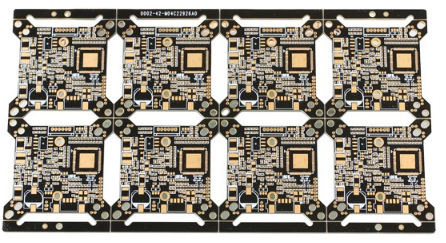With the development of science and technology, especially the progress in the materials of integrated circuits, the computing speed has been significantly improved, and the integrated circuits are moving towards high density, small volume, and single parts. All of these have led to the high frequency response of today's and future printed circuit boards., The use of high-speed digital circuits, that is, it is necessary to control the impedance of the line, low distortion, low interference and low crosstalk, and eliminate electromagnetic interference EMI. PCB design impedance design is becoming more and more important in PCB design. As the front part of the PCB manufacturing front-end, it is responsible for the simulation calculation of impedance and the design of the impedance bar. Customers have become more and more demanding on impedance control, and the number of impedance controls has also increased. How to quickly and accurately carry out the impedance design of PCB design is a problem that the pre-manufacturing personnel are very concerned about.

2. Main types of impedance and influencing factors
Impedance (Zo) definition: The total resistance to alternating current flowing through it at a known frequency is called impedance (Zo). For printed circuit boards, it refers to the total impedance of a certain circuit layer (signal layer) to its closest reference plane under high-frequency signals.
2.1 Impedance type:
(1) Characteristic impedance. In electronic information products such as computers and wireless communications, the energy transmitted in the PCB circuit is a square wave signal (called pulse pulse) composed of voltage and time. The resistance encountered is called the characteristic impedance.
(2) Differential impedance The two same signal waveforms with opposite polarities are input at the driving end, which are respectively transmitted by two differential lines, and the two differential signals are subtracted at the receiving end. The differential impedance is the impedance Zdiff between the two wires.
(3) Odd Mode Impedance The impedance of one of the two lines to the ground is Zoo, and the impedance value of the two lines is the same.
(4) Even-mode impedance The impedance Zcom when two identical signal waveforms with the same polarity are input at the drive end, and the two wires are connected together.
(5) Common Mode Impedance The impedance Zoe of one of the two lines to the ground, the impedance value of the two lines is the same, usually larger than the odd mode impedance.
Among them, characteristic and differential are common impedances, and common mode and odd mode are rare.
2.2 Factors affecting the impedance of PCB:
W-----line width/line-to-line. When the line width increases, the impedance decreases, and the distance increases the impedance increases;
H----Insulation thickness increases in thickness and impedance increases;
T------Copper thickness increases in copper thickness and decreases impedance;
H1---green oil thick, as the thickness increases, the impedance becomes smaller;
Er-----Dielectric constant The DK value of the reference layer increases, and the impedance decreases;
Undercut----W1-W undercut increases, and the impedance becomes larger.